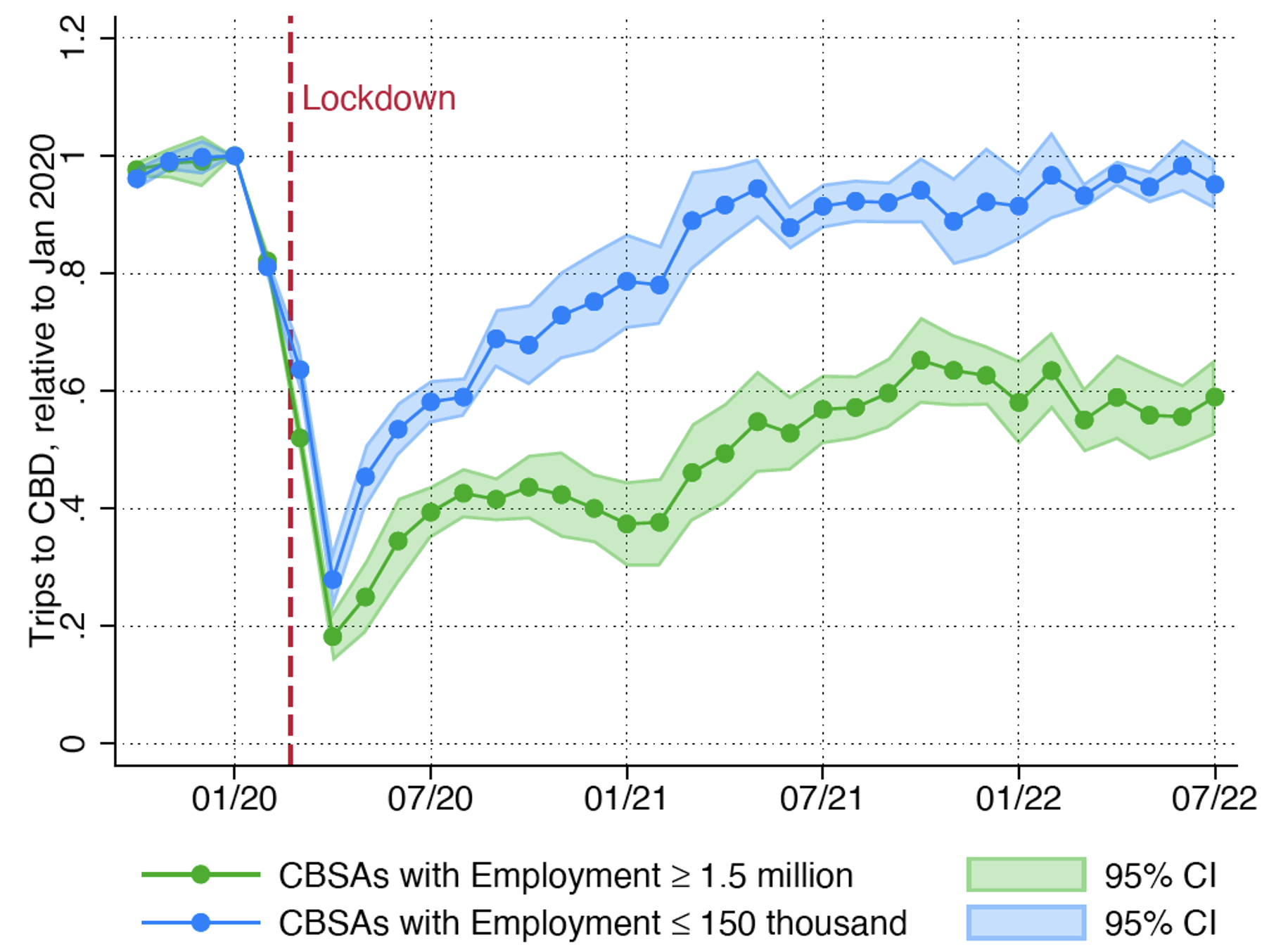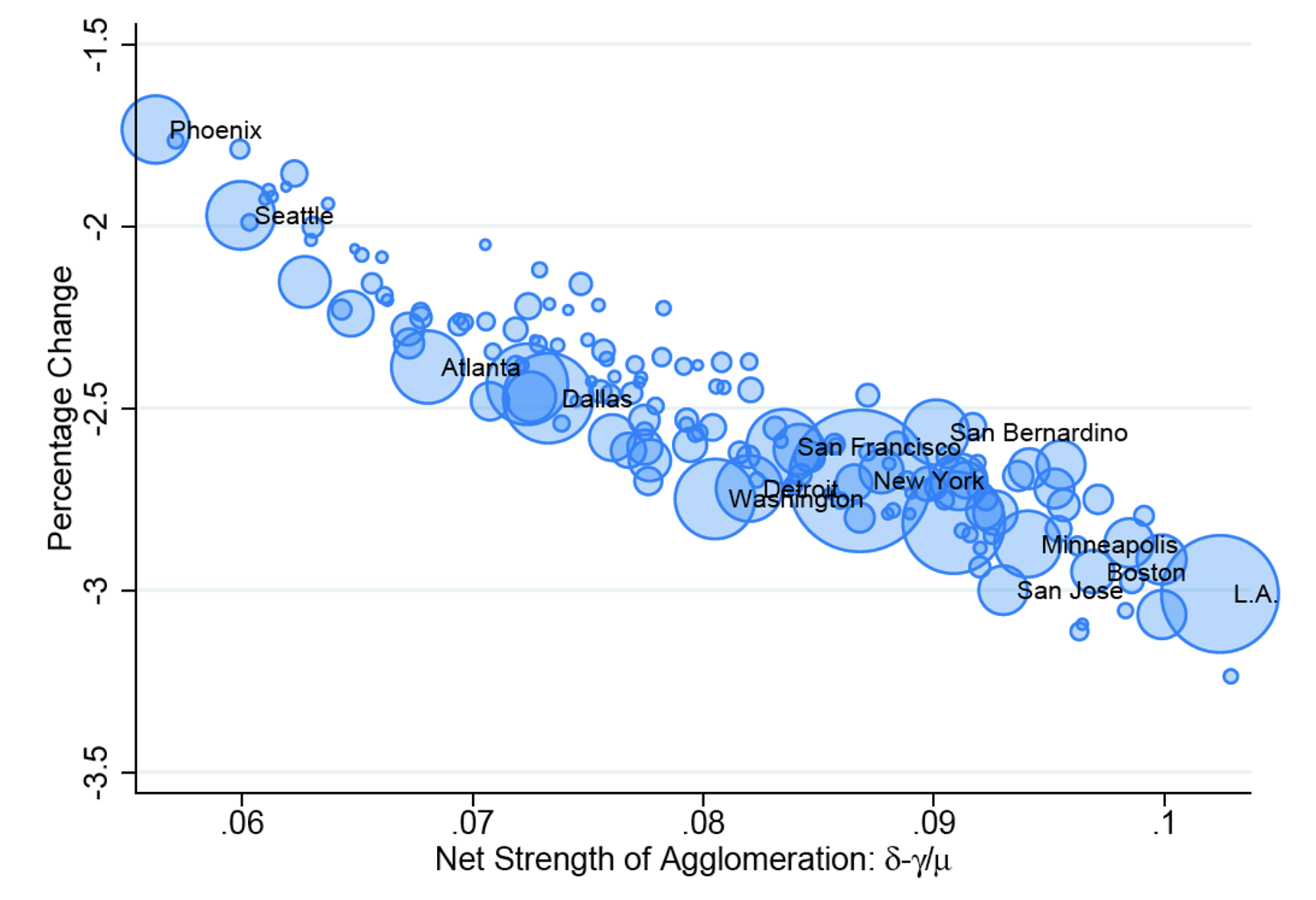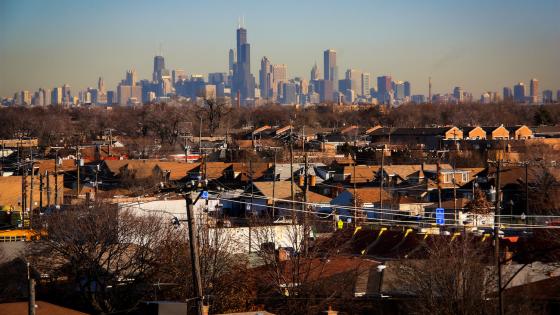The last three decades have seen dramatic improvements in information and communication technology (ICT). ICT has had a profound impact on the way the economy operates. The ability to transfer information instantly across space has enhanced the ability of individuals to collaborate without being present in the same location. Perhaps surprisingly, though, these progressive improvements, well-illustrated by Moore’s law, until recently had only a minor effect on work delivery modes. Before the COVID-19 pandemic, the vast majority of people went to the office to work, mainly to central business districts (CBD) in the city where they lived. Work from home accounted for less than 6% of work hours in the US. This share had been progressively increasing but from a very low base.
The pandemic changed this pattern. In the northern hemisphere spring 2020, most workers decided or were forced to work from home. As revealed by mobile phone tracking data, trips to downtown areas in most US cities, large and small, declined to about 20% of pre-pandemic levels. Since then, we have seen some people return to their office jobs in downtown areas, but the recovery in office work has been very heterogeneous.
As illustrated in Figure 1, in large US cities (cities with employment greater than 1.5 million), trips to the CBD were only at 60% of pre-pandemic levels in mid-2021 and stayed at that level at least until mid-2022 (the end of our data). For example, in cities like New York or San Francisco, trips to the CBD stayed at only 40% of pre-pandemic levels. In short, after the pandemic, people embraced working from home en masse in large cities. The temporary pandemic shock seems to have had a large permanent effect on work from home in these cities. Why?
Figure 1 Visits to CBD relative to January 2020 (SafeGraph mobile phone location data)
We can find clues by studying what happened in smaller cities. If we focus on cities with fewer than 150,000 employees, we find that although the decline in trips to the CBD during the pandemic was similar, these cities are back to normal: trips to the CBD have recovered fully. In these cities, people returned to work in the office.
This contrast is revealing because it shows that rapid improvements in ICT (e.g. Ghent et al. 2021) are unlikely to be behind the enormous change we observe in large cities. Why would these improvements affect large and not small cities? And why didn’t they affect them before the pandemic? Zoom has improved, but it was already available before the pandemic and did not generate this kind of shift in work from home at that time.
In a recent paper (Monte et al. 2023), we argue, instead, that these patterns are linked to the key forces that form cities, namely, agglomeration and congestion forces. At the core of the formation of cities are the valuable interactions between workers in downtown areas. Workers exchange ideas and information (e.g. Atkin et al. 2022) and enhance their ability to work by collaborating with others. Being in the same location – the CBD – facilitates these exchanges. Hence, when workers are given the possibility to work from home, they balance the loss from fewer interactions with the gains from less commuting and enhanced flexibility from being at home (as in Bloom et al. 2021). Naturally, the more workers there are in the CBD, the more valuable these exchanges become, prompting more workers to commute.
The result is a basic coordination problem: if most workers commute to the CBD, we all want to do it because the value of the interactions dominates commuting costs. If the CBD is empty, there is no point in commuting. These types of coordination problems tend to lead to multiple equilibria: the same economic fundamentals are consistent with a city where most people commute or where almost no one does. In these situations, something must determine what we ultimately observe, the realised equilibrium. We need a selection mechanism. We argue that the COVID-19 pandemic was such a selection mechanism.
Of course, reality is more complex. There are costs of switching between work delivery modes, and people face idiosyncratic circumstances that, at a given point in time, make staying at home more convenient. Once these considerations are taken into account, a city can exhibit two stable stationary equilibria, one where most, but not all, people commute and one where most people stay at home. Which equilibrium will be approached will depend on the initial condition, namely, the initial share of commuters.
This is precisely what the pandemic altered. From a stable stationary equilibrium where most people commuted, suddenly we were in a situation where very few of us did, and from there the city converged to a different new stationary equilibrium where many people work from home. This logic also explains why improvements in ICT had only a marginal impact before the pandemic. ICT improvements affected the characteristics of the commuting equilibrium, but cities did not switch equilibria.
But what happened in small cities? Why are they not subject to the same logic? The reason is that multiplicity in stationary equilibria requires particular conditions: agglomeration forces net of congestion forces must be large enough, and the technology for remote work relative to in-office work must be neither terrible (so no one would think of using it) nor so good that it dominates in-office work regardless of circumstances. The extent to which these conditions hold varies by city, both because cities specialise in different industries and because their geography and infrastructure affect the cost of commuting. Industrial specialisation matters because certain industries employ workers in occupations where working from home is easy and productive (Neiman and Dingel 2020), and agglomeration forces in some industries and occupations are much larger than in others (se Rossi-Hansberg et al. 2019).
Overall, we show that the conditions required for a city to exhibit multiple stationary equilibria are much more likely to hold in large than in small cities in the US, which explains why small cities returned to pre-pandemic commuting levels. There is only one stationary equilibrium in these cities, so every temporary shock is, eventually, reversed. Once we estimate the relevant parameters for more than 270 cities in the US using only pre-pandemic data, we show that our framework can explain well which cities have remained at low commuting levels and which ones have gone back.
Does this matter? Do we care if cities end up specialising in a new equilibrium? We calculate the welfare losses from permanently being in the low-commuting equilibrium. On average, as illustrated in Figure 2, welfare losses amount to roughly 2.5%. The variation across cities that exhibit multiplicity goes from 1.7% in Phoenix, Arizona, to about 3% in San Jose or Los Angeles, California. Not dramatic, but also not negligible (see Kichko et al. 2021 for a related conclusion). They balance losses in wages between 10% and 20%, with slightly lower gains from declines in commuting costs.
Figure 2 Decline in welfare in the low-commuting relative to high-commuting equilibrium
Of course, less commuting might also have other beneficial effects that we do not quantify, such as less carbon emissions from transportation.
References
Atkin, D, K Chen and A Popov (2022), “The returns to face-to-face interactions: Knowledge spillovers in Silicon Valley”, CEPR Discussion Paper 17377.
Bloom, N, S Davis, and J M Barrero (2021), “Let me work from home, or I will find another job”, VoxEU.org, 27 July.
Ghent, A, J Gregory, and M Davis (2021), “The work-from-home technology boon”, VoxEU.org, 18 April.
Monte, F, C Porcher, and E Rossi-Hansberg (2023), “Remote work and city structure”, CEPR Discussion Paper 18311.
Neiman, B, and J Dingel (2020), “How many jobs can be done at home?”, VoxEU.org, 7 April.
Rossi-Hansberg, E, P Sarte, and F Schwarzman (2019), “Cognitive hubs and spatial redistribution”, CEPR Discussion Paper 14000.







